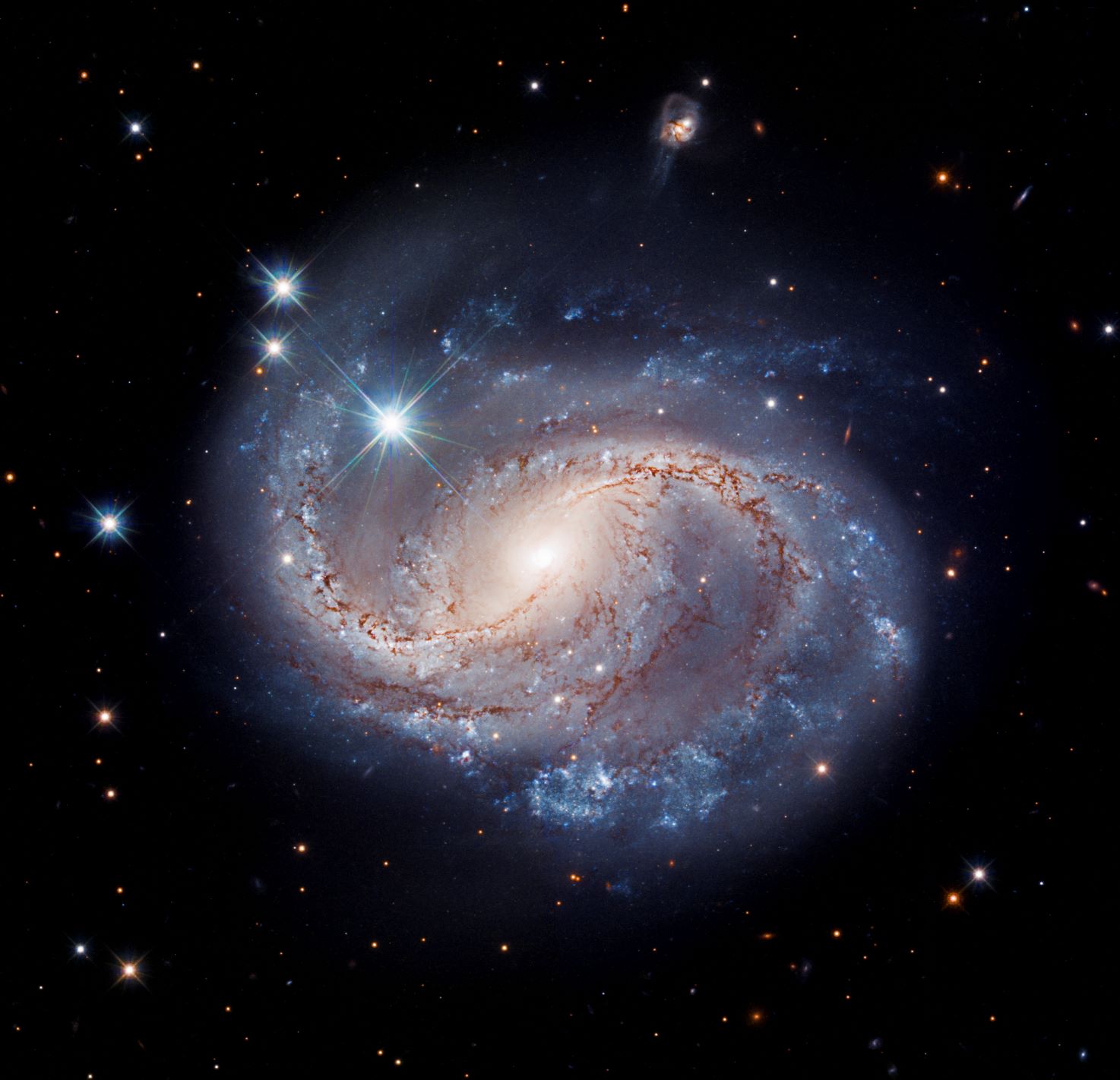Blue swirls of spiral galaxy NGC 6956 stand out radiantly in this latest Hubble image

The NASA/ESA Hubble Space Telescope has captured this star-studded picture of NGC 6956, a barred spiral galaxy that lies 214 million light-years away in the constellation Delphinus.
Using Hubble, astronomers studied NGC 6956's Cepheid variable stars - stars that brighten and dim at regular periods. Since the period of Cepheid variable stars is a function of their brightness, scientists can measure how bright these stars appear from Earth and compare it to their actual brightness to calculate their distance.
Therefore, cepheid variable stars are extremely useful in determining the distance of cosmic objects, which is one of the hardest pieces of information to measure for extragalactic objects.
NGC 6956 also hosts a Type Ia supernova, which is the explosion of a white dwarf star that was gradually accreting matter from a companion star. Type Ia supernovae are much rarer, happening roughly once every 500 years in the Milky Way. By measuring how bright type Ia supernovae appear to be, scientists can measure their distances.
"Scientists can use the measurements gleaned from Cepheid variable stars and Type Ia supernovae to refine our understanding of the rate of expansion of the universe, also known as the Hubble Constant," NASA explained in a statement.
Spectacular spirals 🌀The star-studded arms of the spiral galaxy NGC 6956 are 214 million light-years away in the constellation Delphinus.Read more about this new Hubble image: https://t.co/JnU5tAQcLv pic.twitter.com/VWOxKJejGc
— Hubble (@NASAHubble) December 15, 2022










